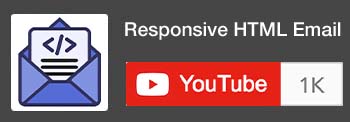HTML Comments
HTML comments are notes or explanations you can add to your HTML code that are ignored by browsers and don’t show up on web pages. They’re essential for maintaining code readability, explaining complex sections, leaving reminders, and temporarily disabling code without deleting it.
Here’s how to create HTML comments:
- Enclose the comment text within opening and closing comment tags:
<!-- -->. - Place them anywhere within your HTML document, except inside of other tags.
HTML Comment Examples:
HTML:
<!-- This is a
multi-line comment
spanning multiple lines. -->
<!-- The paragraph text below will not be seen on a web page.
<p>Paragraph text.</p> -->Key purposes of HTML comments:
- Code Explanations:
- Clarify the purpose of specific code sections.
- Explain the reasoning behind certain decisions in your code.
- Help others (and the future you) understand the code’s intent.
- Reminders and Notes:
- Leave to-do items for yourself or other developers.
- Highlight areas that need attention or future modifications.
- Track changes and version history for better project management.
- Disabling Code:
- Temporarily prevent code from executing without removing it.
- Test different code versions or isolate issues during debugging.
- Browser Compatibility Notes:
- Explain workarounds for specific browser quirks or compatibility issues.
- Share knowledge about known browser inconsistencies.
Best practices for using HTML comments:
- Clarity and conciseness: Keep comments clear, concise, and informative.
- Relevance: Focus on explaining non-obvious or complex code sections.
- Update as needed: Maintain comments as code evolves to avoid confusion.
- Avoid excessive commenting: Over-commenting can clutter code and hinder readability.
- Don’t include sensitive information: Comments are visible in the source code, so avoid passwords, API keys, or other sensitive data.
By effectively using HTML comments, you can create more maintainable, collaborative, and understandable code for both yourself and others.





